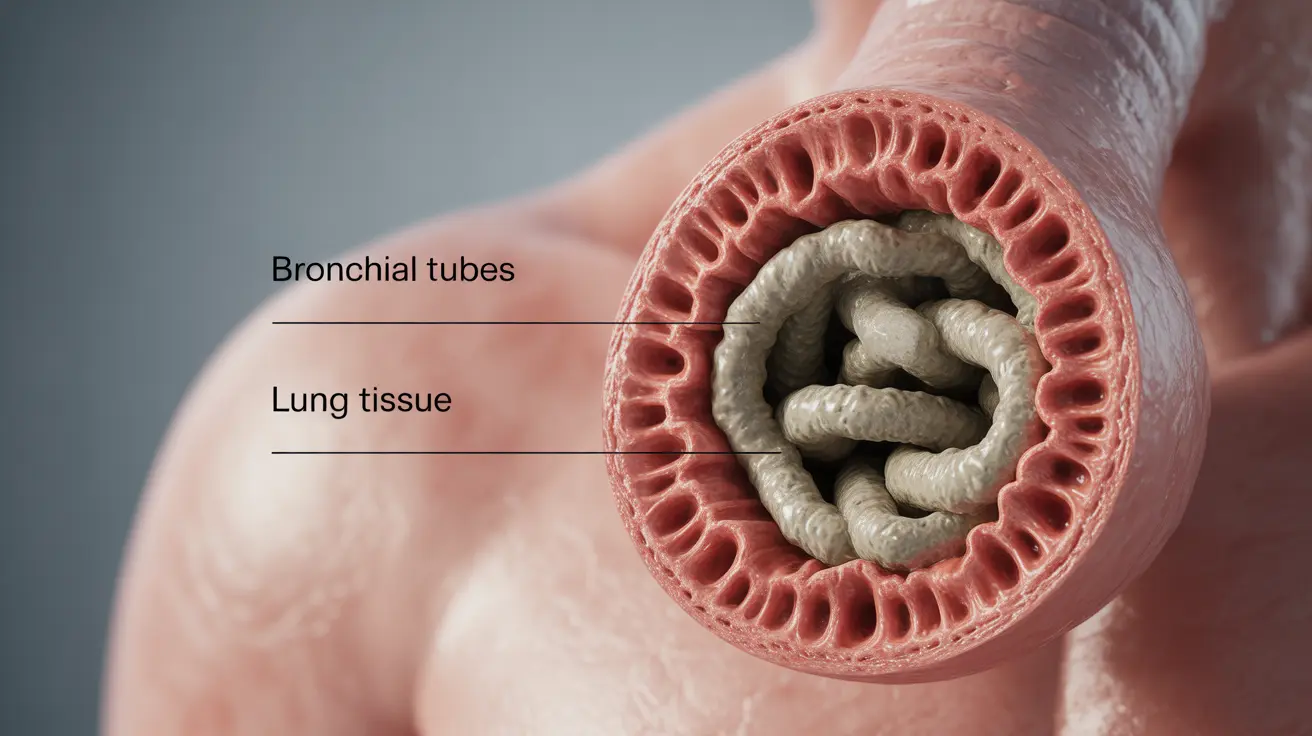Plastic bronchitis is a rare but serious respiratory condition characterized by the formation of thick, rubbery casts in the airways. These branching casts can partially or completely block the bronchial tubes, leading to breathing difficulties and potential life-threatening complications. Understanding this condition, its causes, and treatment options is crucial for both healthcare providers and affected individuals.
While plastic bronchitis can affect people of any age, it's most commonly observed in children with certain underlying cardiac conditions or following cardiac surgery. Early recognition and proper management are essential for preventing severe complications and improving outcomes.
Understanding the Causes and Risk Factors
Plastic bronchitis typically develops as a secondary condition to other underlying health issues. The primary causes and risk factors include:
- Congenital heart defects
- Lymphatic system abnormalities
- Previous cardiac surgery
- Inflammatory conditions
- Respiratory infections
The formation of bronchial casts often results from abnormal lymphatic flow or inflammation in the airways, leading to the accumulation of protein-rich material that solidifies into casts.
Recognizing the Signs and Symptoms
Identifying plastic bronchitis early is crucial for prompt treatment. Common symptoms include:
- Persistent coughing
- Difficulty breathing
- Wheezing
- Chest pain
- Coughing up branching-shaped mucus casts
- Fatigue and weakness
The severity of symptoms can vary significantly, with some patients experiencing mild discomfort while others face severe respiratory distress requiring immediate medical attention.
Diagnostic Approaches
Diagnosing plastic bronchitis involves several steps and imaging techniques:
Physical Examination and History
Healthcare providers will conduct a thorough physical examination and review the patient's medical history, particularly focusing on any underlying cardiac or lymphatic conditions.
Imaging Studies
Several imaging techniques may be used to confirm the diagnosis:
- Chest X-rays
- CT scans
- Lymphangiography
- Bronchoscopy
Treatment Strategies
Treatment for plastic bronchitis typically involves a multi-faceted approach:
Immediate Interventions
When airway obstruction is present, immediate interventions may include:
- Bronchoscopy for cast removal
- Chest physiotherapy
- Mechanical ventilation if necessary
Long-term Management
Long-term treatment strategies focus on:
- Addressing underlying conditions
- Medications to prevent cast formation
- Regular monitoring and follow-up
- Preventive measures to reduce complications
Preventing Complications
Preventing serious complications requires vigilant monitoring and proactive management:
- Regular medical check-ups
- Adherence to prescribed treatments
- Early recognition of worsening symptoms
- Prompt medical attention when needed
Frequently Asked Questions
What causes plastic bronchitis and which conditions increase the risk of developing it? Plastic bronchitis is primarily caused by abnormal lymphatic flow or inflammation in the airways. Conditions that increase risk include congenital heart defects, lymphatic disorders, and previous cardiac surgery.
What are the common symptoms and signs that indicate someone might have plastic bronchitis? Common symptoms include persistent coughing, difficulty breathing, wheezing, chest pain, and the expectoration of branching-shaped mucus casts. Severe cases may present with significant respiratory distress.
How is plastic bronchitis diagnosed, and what imaging tests are used to detect lymphatic leaks? Diagnosis involves physical examination, chest X-rays, CT scans, and lymphangiography to detect lymphatic leaks. Bronchoscopy may be performed to confirm the presence of bronchial casts.
What treatment options are available to remove airway casts and address the underlying causes of plastic bronchitis? Treatment options include bronchoscopic removal of casts, medications to prevent cast formation, and interventions to address underlying conditions. Physical therapy and airway clearance techniques may also be employed.
Can plastic bronchitis be life-threatening, and how can complications like airway obstruction be prevented? Yes, plastic bronchitis can be life-threatening due to airway obstruction. Complications can be prevented through regular monitoring, prompt treatment of symptoms, and addressing underlying conditions. Immediate medical attention is crucial when breathing difficulties occur.




